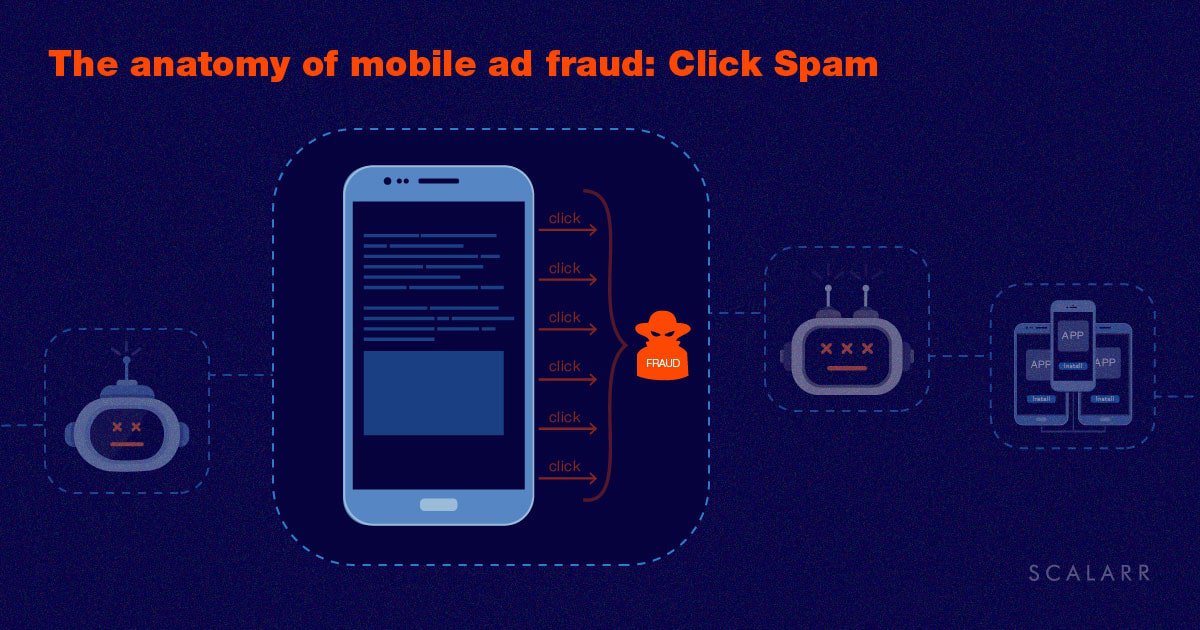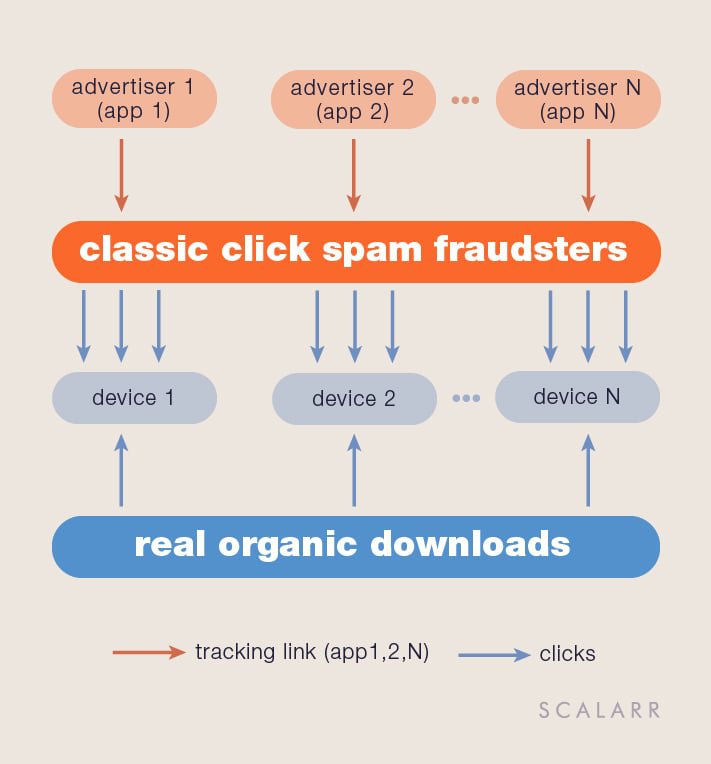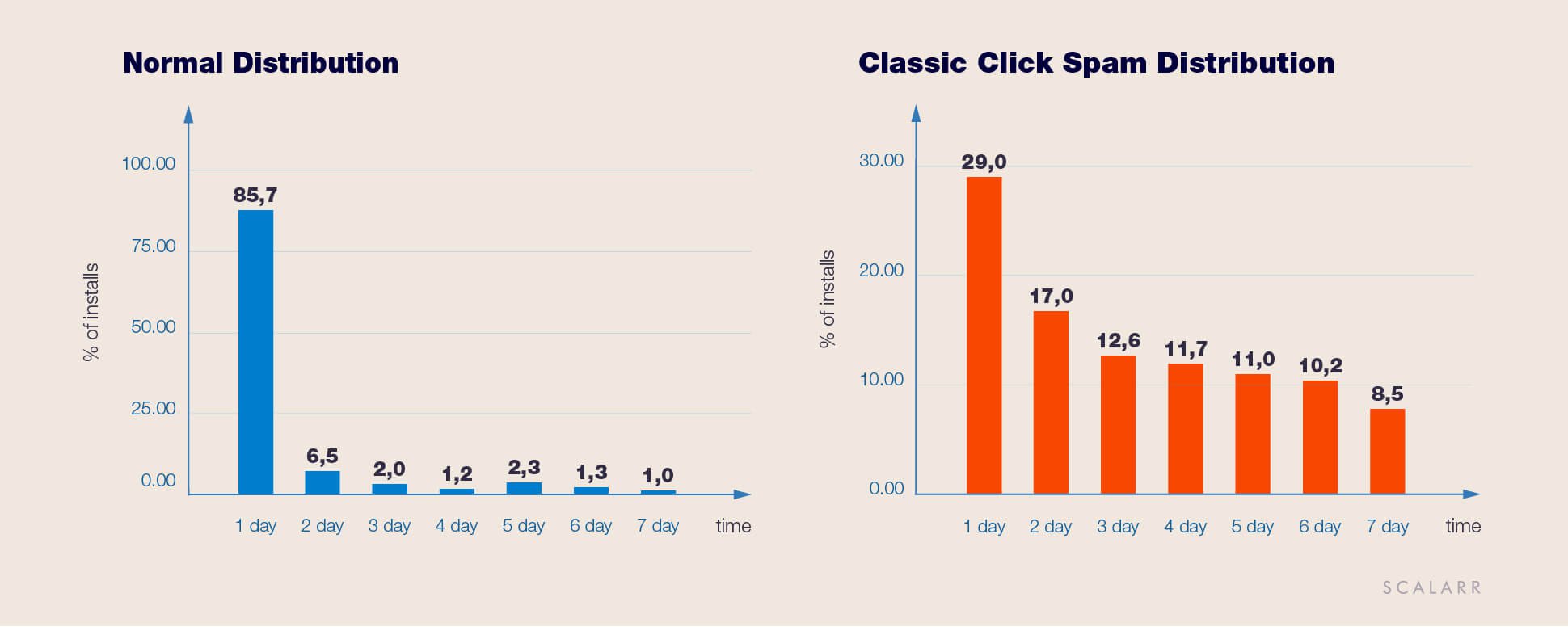
At Scalarr we see Click Spam as one of the oldest types of App Install Fraud. It is also part of the Classic Fraud category which has many forms, including pixel stuffing, ad stacking, cookie stuffing and auto-redirects. These forms are not ‘types’ of fraud, but sub-types of Click Spam implemented in different ways.
Quick Facts
1. In 2018 classic Click Spam was responsible for 5,4% of all fraud cases.
2. The best way to understand you have Click Spam is when you see abnormal Time To Install (TTI) distribution. TTI is the measurement of time between clicking on the ad (impression) and the actual install time.
3. iOS apps are more prone and at higher risk of classic Click Spam.
How Click Spam works
1. Fraudsters register with mobile ad networks and receive tracking links which they can use to steal organic installs and receive payment for them.
2. Fraudsters then try to “infect” as many mobile devices as possible by clicking on sponsored ad links for as many apps and games as possible.
3. As soon as a user opens any of these infected apps, the fraudster sends an automatic click in the background with the fraudsters tracking link, not the tracking link of the actual publisher showing the ad.
NOTE: It is important to understand that installs generated organically are assigned to the tracking link with the last action (click or view) before the app was opened for the first time.
4. As a result, the fraudster will receive the payment for the ‘provided’ installs.
At Scalarr we have also detected installs “stolen” from other publishers. But in most cases, fraudsters steal organic installs from app developers.

How to deal with Click Spam
Click-spam is inherently organic, so all financial indicators, post-install events, as well as other device & install attributes - will be absolutely real. And like all other types of mobile ad fraud, to remain unseen for as long as possible, fraudsters are constantly changing their methods of affecting this data. Since there is no ultimate approach to identifying click spam, we recommend paying close attention to the following important points:
1. The historical amount of organic users coming from the app. This helps us understand the general 'health' of an app.
2. TTI distribution modeling for detecting abnormal behavior.

Download Scalarr’s The Ultimate Guide to App Install Fraud Types to understand more about the different sub-types of Click Spam fraud and how to detect them.
The only solution for mobile advertisers is to partner with anti-fraud tools that make use of powerful and intelligent technologies such as machine...
The road to Scalarr's foundation was paved with challenges and opportunities and in this in-depth conversation, you'll learn the story of Scalarr f...